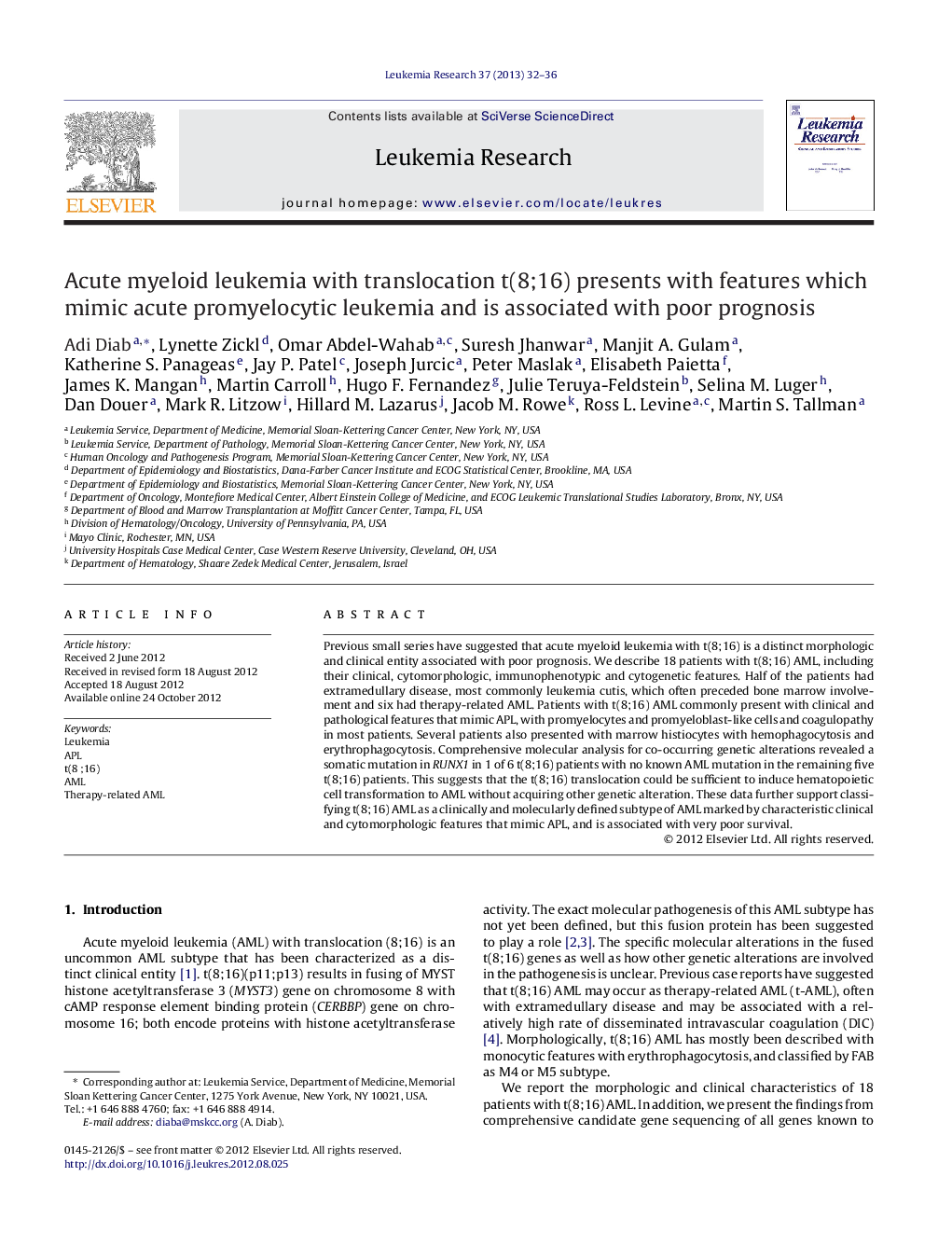| Article ID | Journal | Published Year | Pages | File Type |
|---|---|---|---|---|
| 2136959 | Leukemia Research | 2013 | 5 Pages |
Previous small series have suggested that acute myeloid leukemia with t(8;16) is a distinct morphologic and clinical entity associated with poor prognosis. We describe 18 patients with t(8;16) AML, including their clinical, cytomorphologic, immunophenotypic and cytogenetic features. Half of the patients had extramedullary disease, most commonly leukemia cutis, which often preceded bone marrow involvement and six had therapy-related AML. Patients with t(8;16) AML commonly present with clinical and pathological features that mimic APL, with promyelocytes and promyeloblast-like cells and coagulopathy in most patients. Several patients also presented with marrow histiocytes with hemophagocytosis and erythrophagocytosis. Comprehensive molecular analysis for co-occurring genetic alterations revealed a somatic mutation in RUNX1 in 1 of 6 t(8;16) patients with no known AML mutation in the remaining five t(8;16) patients. This suggests that the t(8;16) translocation could be sufficient to induce hematopoietic cell transformation to AML without acquiring other genetic alteration. These data further support classifying t(8;16) AML as a clinically and molecularly defined subtype of AML marked by characteristic clinical and cytomorphologic features that mimic APL, and is associated with very poor survival.
